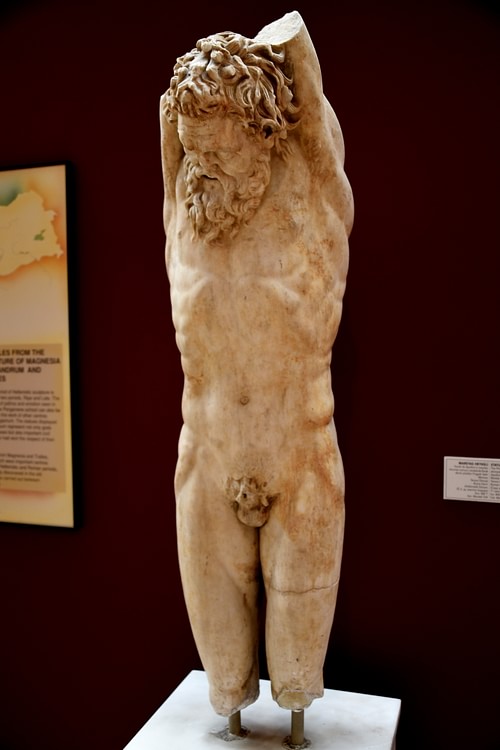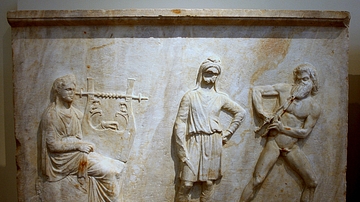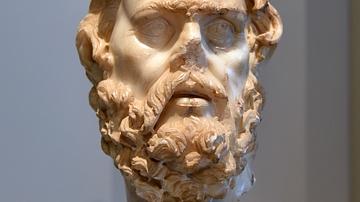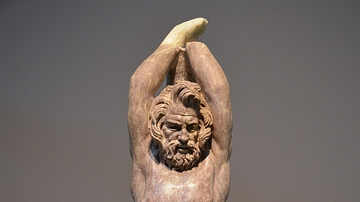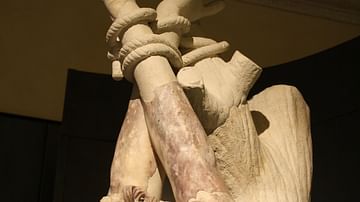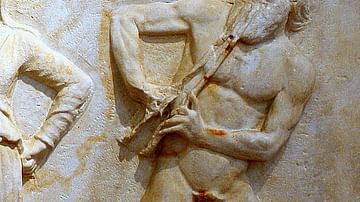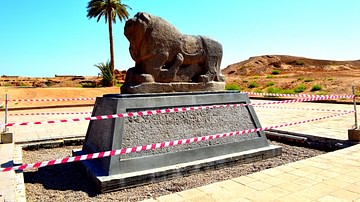Illustration
Marsyas was the Phrygian satyr who was skinned alive when he challenged Apollo to a musical contest and lost. Marsyas was usually sculpted alone, as an isolated statue. However, this statue was found as part of a group of statues, depicting a seated Apollo (on his left side) and a Scythian slave (sharpening a knife to flay Marsyas) on his right side. Here, he was depicted suspended from a tree by his arms (now lost). His body and face show signs of torture and agony. Marble. Roman Period, copy of an original from the 3rd century BCE. From Tarsos (Tarsus), Mersin, in modern-day Turkey. (Museum of Archaeology, Istanbul, Turkey).
About the Author
Cite This Work
APA Style
Amin, O. S. M. (2018, May 12). Statue of Marsyas from Tarsos. World History Encyclopedia. Retrieved from https://www.worldhistory.org/image/8683/statue-of-marsyas-from-tarsos/
Chicago Style
Amin, Osama Shukir Muhammed. "Statue of Marsyas from Tarsos." World History Encyclopedia. Last modified May 12, 2018. https://www.worldhistory.org/image/8683/statue-of-marsyas-from-tarsos/.
MLA Style
Amin, Osama Shukir Muhammed. "Statue of Marsyas from Tarsos." World History Encyclopedia. World History Encyclopedia, 12 May 2018, https://www.worldhistory.org/image/8683/statue-of-marsyas-from-tarsos/. Web. 05 Jul 2025.

